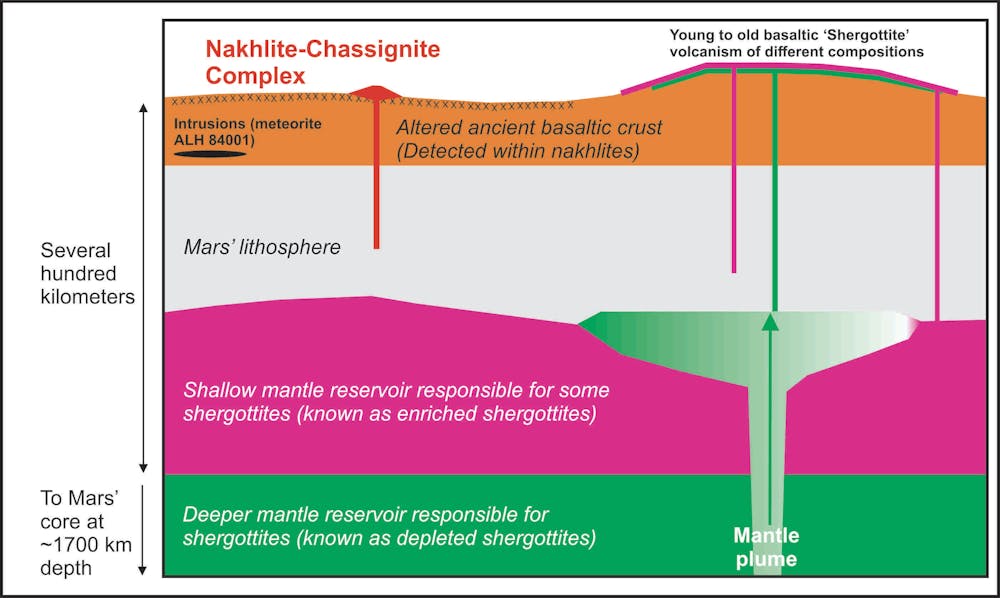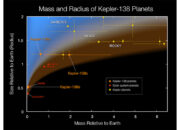Martian meteorites, fragments of the Red Planet that have found their way to Earth, present not only a fascinating subject of study for planetary scientists and astrobiologists, but also a gateway into the ancient geological and potentially biological history of Mars. The study of these extraterrestrial materials provokes an intriguing question: why do these meteorites escape Mars so readily? Understanding the mechanisms behind their ejection into space unveils not only the dynamics of Martian geology but also allows us to speculate about what it entails for life on Mars.
Firstly, one must comprehend the basic mechanisms responsible for the ejection of material from Mars. The Martian atmosphere, composed predominantly of carbon dioxide, exerts a gravitational force which, despite being only about 38% that of Earth, is sufficient under certain conditions to retain gases, including those that are expelled during meteorite impact events. The most compelling factors that contribute to the liberation of Martian rocks into heliocentric orbits include impact cratering, thermal stresses due to diurnal temperature fluctuations, and the presence of volcanic activity.
Impact cratering represents the most significant contributor to the ejection of Martian meteorites. The Red Planet’s surface is pockmarked by numerous craters of varying sizes, resulting from collisions with asteroid and cometary bodies. When a substantial impact occurs, the energy released can dislodge material from the Martian regolith in sufficient quantities and at high enough velocities to overcome the planet’s gravitational pull. Furthermore, studies suggest that some of these impacts can excavate materials from depths that are rich in the planet’s geological history, unearthing ancient minerals and ices that hold clues to the planet’s past environment.
Thermal stresses play a pivotal role as well. Mars experiences significant temperature fluctuations, leading to daily and seasonal changes that can create physical stress fractures in rock formations. This factor, combined with the relatively low atmospheric pressure, increases the likelihood that debris may be dislodged during such environmental cycles. The lighter gravity facilitates the displacement of these fracture-produced rock fragments, allowing them to gradually ascend into Martian orbit.
Moreover, volcanic activity on Mars has been a critical aspect of its geological evolution. The presence of large shield volcanoes, such as Olympus Mons, indicates that the planet has undergone volcanic processes that could also contribute to the ejection of material. While current activity is minimal, ancient explosive eruptions could have propelled pyroclastic material high into the Martian atmosphere, facilitating its eventual escape into space.
The ease with which Martian meteorites escape into space is not merely a geological curiosity but has profound implications for our understanding of the Martian environment and its potential to support life. Each meteorite that lands on Earth encapsulates a fragment of Mars, serving as an extraterrestrial time capsule. Analyses of these meteorites have unveiled a plethora of information about the planet’s history, including clues regarding the presence of water, organic compounds, and conditions that may have been hospitable to life.
For instance, certain Martian meteorites contain minerals such as olivine and phyllosilicates, which suggest interactions with liquid water. This presence of water may indicate more temperate conditions that could have existed on the surface during different geological epochs. Additionally, isotopic analyses provide insights into the Martian atmosphere, revealing the fractionated presence of different elements and molecules that narrate a story of atmospheric evolution and loss.
This fascination with Martian meteorites also extends to the broader implications of astrobiology. The study of these materials invokes questions of life beyond Earth. Scientists ponder the possibilities of biogenic signatures existing within these meteorites, igniting debates concerning whether life once flourished on Mars or whether it could still exist in sub-surface environments shielded from the harsh atmospheric conditions. The recent inclination towards astrobiological research fuels this pursuit, with exploration missions aimed at retrieving samples directly from the Martian surface and analyzing them for biosignatures.
In evaluating the allure of Martian meteorites, one must also consider the socio-cultural implications of such investigations. The dream of exploring other worlds and the possibility of encountering extraterrestrial life has tantalized humanity for centuries. Martian meteorites serve as tangible pieces of this cosmic puzzle, strengthening our connections to the universe and inciting a collective desire for discovery. Their presence on Earth serves as a testament to our ability to transcend our earthly confines, prompting philosophical reflections about our existence within a vast, indifferent cosmos.
In conclusion, the effortless escape of Martian meteorites into space provides profound insights into Martian geology, climate, and the potential for life. Each fragment encapsulates its own narrative, contributing to a multifaceted understanding of a world that, although millions of kilometers away, continues to be a source of inspiration and intrigue. As scientific endeavors advance, unraveling the secrets hidden within Martian meteorites may not only elucidate aspects of our planetary neighbor but also reshape our perception of life’s diversity in the universe.












